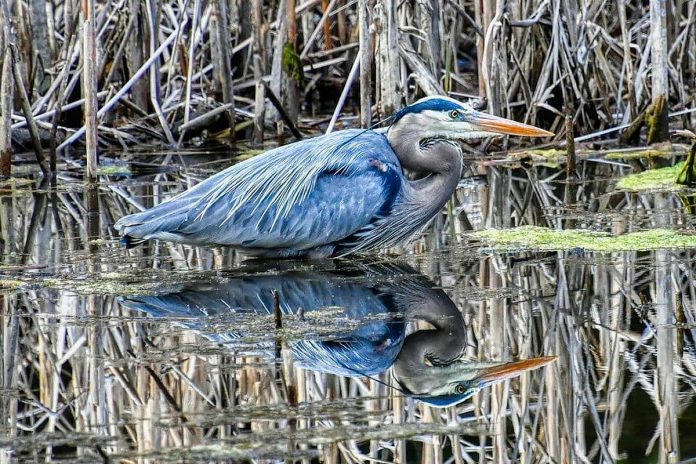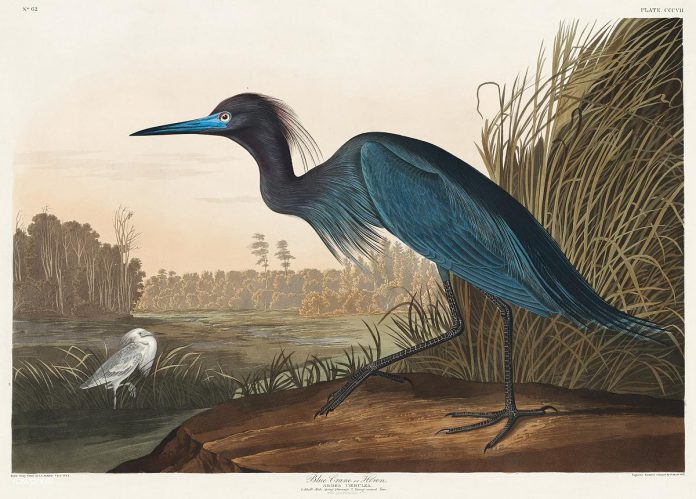
The great blue heron has been selected as Peterborough’s first official ‘city bird’, following an initiative by Bird Friendly Peterborough — a community group made up of representatives from local nature-focused organizations — to have Nature Canada certify the city as being bird friendly.
The announcement was made at the City of Peterborough’s inaugural Environmental and Climate Action Expo on Friday (September 23), after a community vote held from August 2 to September 5 where residents were asked to choose their favourite bird species from a list of 16 local birds curated by Bird Friendly Peterborough.
Bird Friendly Peterborough then selected the winning bird from the five species that received the most votes, which were the northern cardinal (322), great blue heron (319), osprey (260), black-capped chickadee (232), and pileated woodpecker (198).
“Congratulations to everyone involved with Bird Friendly Peterborough for a successful campaign to raise awareness of Peterborough’s birds and the essential role they play in our ecosystem,” said Kemi Akapo, city councillor and deputy mayor in a media release.
The largest heron native to North America, the great blue heron is found near the shores of open water and in wetlands over most of North America and Central America, as well as the Caribbean and the Galápagos Islands. They primarily feed on small fish, but also eat a wide range of larger insects, frogs and toads, and even rodents and other small mammals.
Generally solitary feeders, herons often forage while standing in shallow water, locating their food by sight then spearing it with their long and sharp bill and usually swallowing it whole.

American artist, naturalist, and ornithologist John James Audubon (after whom the Audubon Society is named) illustrated and described the great blue heron in the second edition of his early 19th-century book Birds of America.
His description of the bird will resonate with anyone who has tried to get close to a great blue heron.
“Extremely suspicious and shy, this bird is ever on the look-out,” Audubon writes. “Its sight is as acute as that of any falcon, and it can hear at a considerable distance, so that it is enabled to mark with precision the different objects it sees, and to judge with accuracy of the sounds which it hears. Unless under very favourable circumstances, it is almost hopeless to attempt to approach it.”
On June 27, Peterborough city council approved an application from Bird Friendly Peterborough that elected the city as being bird friendly through Nature Canada’s Bird Friendly City certification program. In April, Nature Canada had certified Peterborough as having met the entry-level requirements of the program through existing city policies and community programs.
“Thank you to everyone who participated in the community vote for Peterborough’s official city bird,” said Thomas Luloff of Bird Friendly Peterborough. “The majestic great blue heron, often seen along the shores of the Otonabee River and surrounding waterways, perfectly represents Peterborough’s connection between land and water.”
For tips on reducing threats to local birds, and to learn more about making homes and businesses bird friendly, visit www.birdfriendlypeterborough.ca.


























